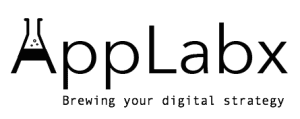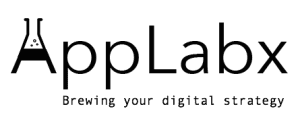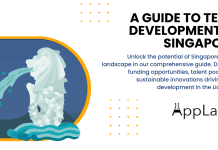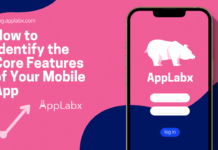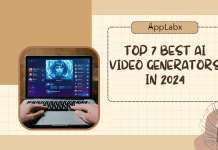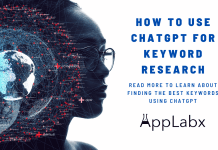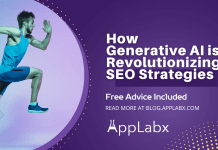Key Takeaways
- AI agents offer autonomous, goal-driven intelligence ideal for dynamic, multi-step business processes.
- Traditional AI excels in static, data-rich tasks requiring high precision and minimal adaptation.
- Choosing the right AI approach enhances scalability, efficiency, and long-term strategic impact.
In today’s fast-evolving digital landscape, artificial intelligence (AI) is no longer a futuristic concept—it’s a present-day necessity for businesses looking to drive efficiency, innovation, and competitive advantage. However, as AI continues to mature, a critical distinction has emerged between traditional AI systems and a new generation of autonomous AI agents. While both are designed to enhance decision-making and streamline operations, they differ significantly in functionality, design philosophy, and practical application. For business leaders and tech strategists, understanding these differences isn’t just a matter of technical curiosity—it’s a strategic imperative.
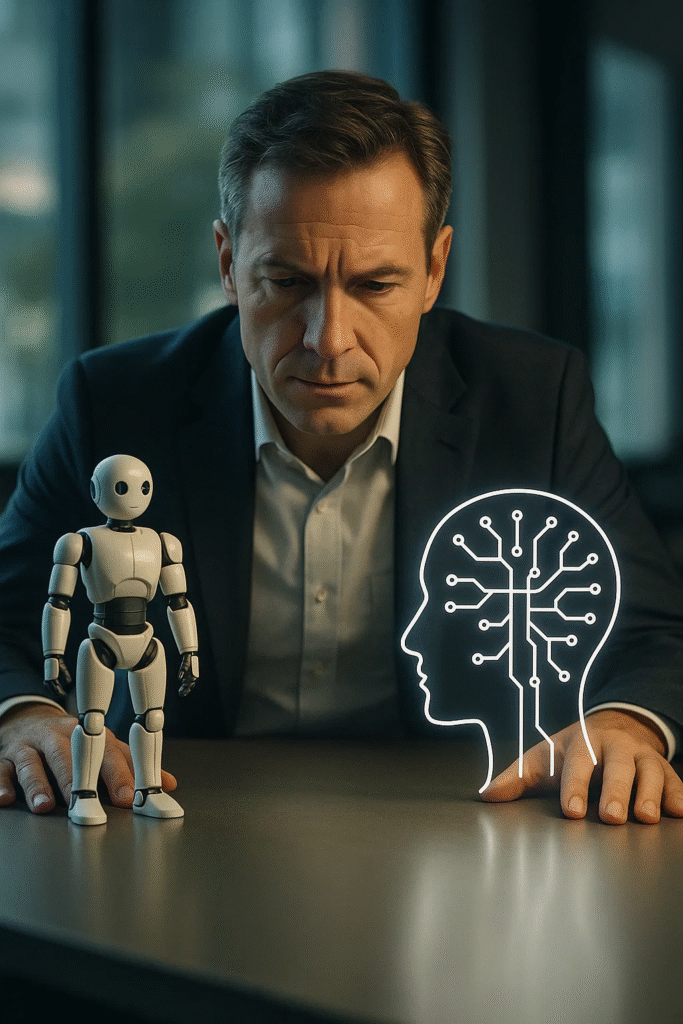
Traditional AI, often referred to as narrow or rule-based AI, is typically built to perform specific tasks using predefined rules or historical training data. Examples include recommendation engines, spam filters, and basic chatbots. These systems are excellent at executing repetitive, clearly defined tasks with high precision, but they lack contextual understanding, adaptability, and autonomy. They rely heavily on human oversight and cannot act beyond their predefined scope.
In contrast, AI agents represent a paradigm shift. These systems are designed to operate autonomously, interacting with their environment, learning continuously, and making decisions based on evolving contexts and goals. AI agents are capable of proactive behavior, managing complex workflows, and collaborating across systems without constant human intervention. They’re not limited to performing a single function—instead, they can plan, execute, and optimize multi-step processes aligned with strategic objectives.
This difference is more than technical—it’s transformational. AI agents are increasingly being deployed across industries for use cases like autonomous customer service, intelligent process automation, dynamic supply chain optimization, and personalized digital experiences. They act less like tools and more like intelligent collaborators that adapt and evolve alongside your business.
Yet, despite their growing prominence, many organizations still default to traditional AI solutions, unaware of the potential value that AI agents can unlock. The key to unlocking that value lies in understanding how AI agents differ from traditional AI, and how these differences can shape everything from operational efficiency to customer engagement, risk management, and long-term scalability.
This comprehensive guide aims to demystify the fundamental differences between AI agents and traditional AI, offering practical insights for businesses evaluating the best path forward. By the end of this article, you’ll be equipped with the knowledge to make informed decisions about integrating AI into your business strategy—whether that means leveraging traditional AI systems for precision-based tasks or embracing AI agents to drive broader, more dynamic transformation.
But, before we venture further, we like to share who we are and what we do.
About AppLabx
From developing a solid marketing plan to creating compelling content, optimizing for search engines, leveraging social media, and utilizing paid advertising, AppLabx offers a comprehensive suite of digital marketing services designed to drive growth and profitability for your business.
AppLabx is well known for helping companies and startups create world-class AI agents.
At AppLabx, we understand that no two businesses are alike. That’s why we take a personalized approach to every project, working closely with our clients to understand their unique needs and goals, and developing customized strategies to help them achieve success.
If you need a digital consultation, then send in an inquiry here.
AI Agents vs. Traditional AI: Understanding the Key Differences for Your Business
- What Are AI Agents?
- What Is Traditional AI?
- Key Differences Between AI Agents and Traditional AI
- Use Cases: When to Choose AI Agents vs. Traditional AI
- Benefits of Adopting AI Agents for Businesses
- Challenges and Considerations
- Future Trends: Where AI Agents Are Heading
1. What Are AI Agents?
AI agents represent a new generation of artificial intelligence systems designed to act autonomously, reason contextually, and learn continuously. Unlike traditional AI models that are task-specific and reactive, AI agents are proactive, goal-oriented entities that interact with their environment, adapt to change, and make real-time decisions based on complex inputs.
Definition and Core Concept
AI agents are autonomous software entities that:
- Perceive their environment through data and sensors (physical or digital)
- Interpret inputs using advanced AI models (e.g., LLMs, reinforcement learning)
- Make independent decisions based on goals or objectives
- Take action to influence their environment or complete tasks
- Learn and evolve from feedback and interactions over time
Key Characteristics of AI Agents
1. Autonomy
- Operate independently without continuous human oversight
- Execute complex workflows and decisions across systems
- Adjust behavior dynamically based on new data
2. Proactiveness
- Anticipate user needs and take initiative
- Trigger actions based on predictive analysis or historical trends
- Schedule and optimize tasks ahead of time
3. Contextual Understanding
- Process structured and unstructured data to understand situations
- Use natural language understanding, computer vision, or other AI modalities
- Respond appropriately based on real-world or business context
4. Goal-Oriented Reasoning
- Work towards predefined objectives
- Optimize processes for efficiency, ROI, or customer satisfaction
- Prioritize tasks dynamically based on urgency or impact
5. Continuous Learning
- Improve performance through reinforcement learning or feedback loops
- Adjust decision-making strategies based on outcomes
- Integrate new data into models in real time
Types of AI Agents
| Type of AI Agent | Description | Example Use Case |
|---|---|---|
| Reactive Agents | Respond to stimuli without memory | Temperature control in smart buildings |
| Deliberative Agents | Use internal models to plan actions | AI planning logistics for supply chain |
| Hybrid Agents | Combine reactive and deliberative capabilities | Autonomous customer service agents |
| Learning Agents | Continuously learn and adapt | Fraud detection systems that evolve over time |
| Collaborative Agents | Interact with other agents or humans | Multi-agent systems in healthcare diagnostics |
Architecture of an AI Agent
Core Components:
- Perception Module: Gathers input from data, APIs, sensors
- Knowledge Base: Stores domain-specific and contextual knowledge
- Decision Engine: Uses logic, machine learning, and optimization techniques
- Action Module: Executes decisions via APIs, interfaces, or outputs
- Feedback Loop: Monitors outcomes and updates the system for improvement
Visual Diagram:
[ Environment ]
|
[Perception Module]
|
[Knowledge Base] <----> [Decision Engine] ----> [Action Module] ----> [Environment]
↑
[Feedback Loop]
Examples of AI Agents in Real-World Business Applications
Customer Support
- AI agent automates resolution of customer queries across email, chat, and voice
- Example: AI assistants in banking that resolve account-related issues autonomously
Marketing Automation
- AI agents personalize user journeys based on behavioral data
- Example: E-commerce agent that sends tailored promotions to high-intent users
Enterprise Workflow Automation
- Agents orchestrate multi-step business processes across departments
- Example: AI-driven procurement assistant that manages supplier selection, quotation, and approval workflows
Healthcare Assistants
- Provide personalized patient engagement, appointment scheduling, and post-care follow-ups
- Example: AI agent that monitors chronic patient data and alerts doctors in real time
Finance & Risk Management
- Analyze vast data sets, detect anomalies, and make trade decisions
- Example: Autonomous trading agents that adjust portfolio allocation based on market conditions
Comparison Table: AI Agents vs. Traditional AI in Action
| Feature/Capability | AI Agents | Traditional AI |
|---|---|---|
| Autonomy | High – operates without human guidance | Low – requires human input or scripting |
| Task Scope | Broad – manages complex workflows | Narrow – handles one task well |
| Adaptability | Learns and adapts in real-time | Static models unless retrained manually |
| Integration | Cross-platform orchestration | Task-specific integrations only |
| Decision-Making | Contextual and goal-based | Rule-based or pattern recognition |
| Continuous Learning | Built-in learning from interactions | Limited or requires supervised retraining |
| Use Case Example | Autonomous HR assistant | Resume parsing tool |
Business Value Matrix of AI Agents
| Business Objective | How AI Agents Contribute | Value Delivered |
|---|---|---|
| Cost Reduction | Automate complex, repetitive workflows | Reduced labor and operational expenses |
| Customer Experience | Real-time, personalized interactions | Higher satisfaction and retention |
| Speed to Market | Accelerate product launches and campaigns | Competitive advantage |
| Risk Mitigation | Continuous monitoring and decision adaptation | Proactive issue detection and correction |
| Scalability | Operate across teams and departments | Seamless growth with minimal overhead |
Summary Points
- AI agents are goal-driven, autonomous, and continuously evolving systems that represent a major leap beyond traditional AI.
- They are particularly effective in environments requiring multi-step task automation, real-time decision-making, and cross-functional collaboration.
- By integrating AI agents, businesses can significantly enhance operational efficiency, customer satisfaction, and strategic agility.
2. What Is Traditional AI?
Traditional AI refers to the early and widely-used form of artificial intelligence systems that operate within narrow, predefined boundaries. These systems are typically task-specific, rely on structured data, and execute operations using rule-based logic, statistical models, or machine learning algorithms that do not adapt on their own after deployment.
Definition and Core Concept
Traditional AI—also known as narrow AI—is designed to:
- Solve specific, well-defined problems using pre-programmed logic or models
- Operate based on historical data and human-labeled training sets
- Deliver high accuracy within limited scope tasks
- Require manual updates or retraining to adapt to new conditions
Key Characteristics of Traditional AI
1. Rule-Based or Pre-Trained Models
- Use if-then rules or pre-set logic to determine output
- Machine learning models are trained offline and remain static post-deployment
2. Task Specialization
- Optimized to perform one function with precision
- Not designed for cross-domain flexibility
3. No Autonomy
- Cannot make decisions beyond scripted responses
- Relies heavily on human intervention for updates or problem-solving
4. Reactive Behavior
- Responds only when prompted by a user or system
- Lacks initiative or goal-directed behavior
5. Limited Learning Capabilities
- Does not evolve from new interactions
- Requires human engineers to retrain with updated datasets
Types of Traditional AI
| Type | Description | Example Use Case |
|---|---|---|
| Rule-Based Systems | Operate on hard-coded logic and rules | Credit approval systems in legacy banking |
| Supervised Machine Learning | Trained on labeled data with known outcomes | Email spam detection |
| Unsupervised Learning | Finds patterns in unlabeled data | Customer segmentation |
| Expert Systems | Encapsulate domain expertise in rule logic | Medical diagnosis support tools |
| Classical Chatbots | Scripted bots using decision trees | Website FAQs and basic lead qualification |
Traditional AI System Architecture
Core Components:
- Input Layer: Receives structured data from sources
- Processing Logic: Implements rules or models (decision trees, neural nets)
- Inference Engine: Applies model to input and returns output
- Output Layer: Delivers static, predefined responses
- Manual Update Pipeline: Requires engineers to retrain or reprogram for any improvements
Visual Workflow Diagram:
[ Structured Input ] --> [ Rules / Model ] --> [ Inference Engine ] --> [ Output ]
↑
[ Manual Model Update ]
Examples of Traditional AI in Real-World Business Applications
Email Filtering
- Filters spam using Bayesian models trained on historical data
- Example: Gmail’s spam filter that flags unsolicited promotional content
Product Recommendations
- Suggests products based on collaborative filtering algorithms
- Example: Amazon’s item-to-item recommendation engine
Credit Scoring
- Evaluates risk using regression or decision tree models on applicant data
- Example: FICO scoring models used by financial institutions
Sales Forecasting
- Predicts future sales using historical trends
- Example: Retail AI tools that forecast demand using past purchase data
Chatbots (Scripted)
- Responds using predefined decision trees without understanding context
- Example: Bank website chatbot answering FAQs about account setup
Comparison Table: Traditional AI vs. AI Agents
| Feature | Traditional AI | AI Agents |
|---|---|---|
| Scope | Narrow and domain-specific | Broad and cross-functional |
| Autonomy | None – fully dependent on user input | High – acts independently based on goals |
| Adaptability | Static after deployment | Learns and evolves in real time |
| Task Execution | Single-task focused | Multi-step, complex task management |
| Learning | Requires manual retraining | Continuously learns from environment |
| Integration | Hardcoded API or software integration | Dynamic, multi-system orchestration |
| Intelligence Type | Predictive or rule-based | Goal-oriented and proactive |
| Common Example | Email classifier | AI-powered virtual assistant |
Business Value Matrix: Traditional AI Use Cases
| Business Function | Traditional AI Application | Outcome |
|---|---|---|
| Marketing | Customer segmentation and targeting | Personalized campaigns based on past data |
| HR & Recruitment | Resume parsing and shortlisting | Faster candidate screening |
| Finance & Risk | Fraud detection using rules and anomaly detection | Reduction in fraudulent transactions |
| Operations | Inventory forecasting | Minimized stockouts or overstocking |
| Customer Support | Rule-based chatbots | Faster resolution of simple queries |
Strengths of Traditional AI
- High accuracy on repetitive, well-defined tasks
- Mature tools and frameworks readily available (e.g., TensorFlow, scikit-learn)
- Lower implementation complexity compared to autonomous systems
- Effective at tasks with static environments or limited variability
Limitations of Traditional AI
- Poor adaptability in dynamic environments
- Lack of contextual understanding or multi-modal reasoning
- Not suitable for end-to-end automation or multi-domain orchestration
- Requires frequent human supervision and maintenance
When to Use Traditional AI
| Situation | Traditional AI Suitability |
|---|---|
| Task is repetitive and does not require adaptation | High |
| Data patterns are well-known and stable | High |
| System complexity is low | High |
| Need real-time multi-system interaction | Low |
| Requirement for autonomy and self-improvement | Low |
Summary Points
- Traditional AI offers powerful solutions for clearly defined problems, excelling in areas like prediction, classification, and automation of simple tasks.
- It is cost-effective, reliable, and well-suited for legacy systems where adaptability and autonomy are not required.
- However, in a dynamic, multi-system, real-time environment, traditional AI is increasingly being complemented or replaced by AI agents that offer a higher level of intelligence and operational autonomy.
3. Key Differences Between AI Agents and Traditional AI
Understanding the core differences between AI agents and traditional AI is critical for selecting the right technology for your business. While both leverage artificial intelligence principles, their capabilities, design structures, and real-world applications diverge significantly. This section explores these distinctions across key dimensions, helping businesses determine where each approach fits best.
1. Autonomy and Decision-Making
Traditional AI
- Executes tasks only when explicitly triggered
- Requires human supervision or scripted instructions
- Follows pre-defined rules or patterns without deviation
- Cannot self-initiate actions or pursue goals
AI Agents
- Operate autonomously based on goals and real-time context
- Make independent decisions without continuous human input
- Prioritize tasks dynamically depending on urgency or value
- Proactively initiate tasks or responses based on environmental cues
Example Comparison
| Task | Traditional AI Output | AI Agent Output |
|---|---|---|
| Handling a customer inquiry | Responds based on a fixed chatbot script | Understands query, escalates, and follows up |
| Rebalancing financial portfolios | Requires user to run model | Adjusts autonomously based on live data |
2. Learning and Adaptability
Traditional AI
- Requires retraining with new datasets to improve performance
- Limited to patterns it was originally trained on
- Does not adapt dynamically to new environments or user behavior
AI Agents
- Continuously learn from interactions, feedback, and outcomes
- Adapt their strategies in real time to changing conditions
- Use reinforcement learning and fine-tuning to self-improve
Learning Matrix
| Capability | Traditional AI | AI Agents |
|---|---|---|
| Real-time Learning | No | Yes |
| Feedback Loop Integration | Manual | Automatic |
| Adaptation Speed | Low | High |
| Self-Evolution | Not Supported | Supported via reinforcement learning |
3. Scope and Task Complexity
Traditional AI
- Optimized for narrow, singular tasks (e.g., classify, predict, detect)
- Best for domains with stable, repetitive workflows
- Cannot manage multi-step or multi-domain interactions
AI Agents
- Handle multi-step, multi-domain processes autonomously
- Capable of context-switching, long-term planning, and cross-platform execution
- Ideal for end-to-end automation across systems
Use Case Matrix
| Use Case | Traditional AI | AI Agent |
|---|---|---|
| Image recognition | ✓ | ✓ |
| Lead scoring | ✓ | ✓ |
| Personal assistant (end-to-end) | ✗ | ✓ |
| Supply chain orchestration | ✗ | ✓ |
4. Contextual Understanding
Traditional AI
- Limited or no contextual memory
- Often responds based on pattern-matching or statistical correlation
- Cannot remember past interactions across sessions
AI Agents
- Maintain short-term and long-term memory for context
- Understand user intent based on history, environment, and real-time data
- Tailor actions and decisions according to ongoing goals and changing inputs
Example
| Scenario | Traditional AI Behavior | AI Agent Behavior |
|---|---|---|
| User changes shipping address | Requires full re-entry of information | Recognizes user profile and updates system |
| Ongoing support conversation | Treats each interaction as separate | Tracks full conversation history |
5. Proactivity vs Reactivity
Traditional AI
- Reactive in nature
- Responds only to direct inputs or pre-set conditions
- Cannot initiate actions without being prompted
AI Agents
- Proactively act on behalf of users or systems
- Initiate reminders, updates, optimizations, or alerts based on goals
- Anticipate needs before a user asks
Proactivity Example
| Scenario | Traditional AI | AI Agent |
|---|---|---|
| Missed deadline detection | Needs user to run report | Notifies manager, reschedules tasks |
| Low inventory detection | Waits for request | Automatically triggers reordering |
6. System Integration and Interoperability
Traditional AI
- Designed for single-task integrations
- Often limited to one software or environment
- Requires manual integration with each new system
AI Agents
- Integrate seamlessly across multiple platforms and tools
- Use APIs, APIs, or multi-agent frameworks for cross-system communication
- Orchestrate actions between departments, tools, and databases
Integration Table
| Feature | Traditional AI | AI Agents |
|---|---|---|
| Multi-platform Support | Limited | Extensive |
| API Orchestration | Basic | Advanced, real-time orchestration |
| Workflow Span | Single-system | Cross-functional |
7. Goal Orientation and Planning
Traditional AI
- Focuses on performing a task when triggered
- Lacks understanding of long-term objectives
- No strategic planning capabilities
AI Agents
- Operate based on predefined or evolving goals
- Plan steps toward achieving those goals over time
- Monitor and adjust execution to stay aligned with outcomes
Example: Marketing Campaign Execution
| Action | Traditional AI | AI Agent |
|---|---|---|
| Sending emails | Based on pre-set schedule | Adapts timing based on open rates |
| Optimizing ad spend | Based on historic data | Adjusts in real-time by performance |
| Following up on abandoned carts | Manual trigger or script | Initiates based on user intent |
8. Human Involvement and Oversight
Traditional AI
- Requires constant configuration, monitoring, and maintenance
- Dependent on engineers or data scientists to fine-tune performance
AI Agents
- Operate independently with minimal oversight
- Alert humans only for exceptions or edge cases
- Reduce operational load on tech teams
Oversight Matrix
| Element | Traditional AI | AI Agents |
|---|---|---|
| Human Supervision Needed | High | Low |
| Manual Rule Updates | Frequent | Rare |
| System Scalability | Limited by human capacity | Easily scalable |
Comprehensive Summary Table: AI Agents vs Traditional AI
| Attribute | Traditional AI | AI Agents |
|---|---|---|
| Autonomy | Low | High |
| Learning Style | Static (retrained manually) | Dynamic (continuous) |
| Task Type | Narrow, singular | Broad, multi-step |
| Context Awareness | Limited | High |
| Proactivity | None | Strong |
| Integration Complexity | High | Low |
| Goal Orientation | Task-based | Objective-driven |
| Best Fit | Stable environments, repetitive tasks | Dynamic processes, autonomous operations |
Summary Points
- The core distinction lies in intelligence scope and operational independence.
- AI agents excel in complex, evolving environments where context, goal-orientation, and autonomy are critical.
- Traditional AI remains valuable for narrow, repetitive tasks with static requirements and well-defined data.
- Businesses must assess their workflow complexity, scalability needs, and integration environment to determine the right solution.
4. Use Cases: When to Choose AI Agents vs. Traditional AI
Selecting between AI agents and traditional AI depends largely on the complexity of the task, level of autonomy required, data dynamics, and business goals. Each has its strengths, and the optimal choice varies by scenario. This section outlines when to deploy each type, supported by examples, matrices, and decision models to guide practical implementation.
Choosing AI Agents: Ideal Scenarios
AI agents are best suited for dynamic, multi-step, goal-driven workflows that require autonomous decision-making and cross-functional integration.
Key Use Cases
1. Intelligent Customer Support
- AI agents manage full customer interactions, escalate issues, and provide personalized responses
- Example: Virtual customer service agent that handles Tier 1–3 support autonomously and escalates complex queries when necessary
2. Autonomous Business Process Automation
- AI agents coordinate processes across departments and platforms
- Example: Order-to-cash automation involving CRM, ERP, inventory, and invoicing systems
3. Predictive Maintenance and IoT Monitoring
- Agents monitor sensor data and initiate maintenance or alerts based on risk thresholds
- Example: Smart factory agents predicting machine failures and rescheduling production accordingly
4. Personalized Digital Experiences
- Deliver content, services, or recommendations tailored in real-time
- Example: Digital shopping assistant that adapts based on browsing patterns, preferences, and purchase history
5. Strategic Decision Support
- AI agents aggregate data from multiple sources and propose strategic actions
- Example: Investment planning agent that monitors markets and reallocates assets based on investor profiles
Choosing Traditional AI: Ideal Scenarios
Traditional AI excels at static, repetitive tasks where data patterns are stable, decision rules are known, and real-time learning is unnecessary.
Key Use Cases
1. Classification and Prediction
- Tasks like fraud detection, sentiment analysis, or document categorization
- Example: Email spam classifier using supervised machine learning
2. Image and Voice Recognition
- Processes input data using pre-trained models
- Example: Security system identifying faces from static camera feeds
3. Recommendation Systems
- Suggest products or content using collaborative filtering
- Example: E-commerce engine recommending products based on purchase history
4. Rule-Based Chatbots
- Respond to FAQ-style queries using a decision tree
- Example: Website chatbot for store hours, return policies, and delivery status
5. Document Processing
- Automatically extract data fields from forms or invoices
- Example: OCR-based system tagging scanned receipts for expense reporting
Comparison Table: Use Case Alignment
| Business Scenario | Best Fit | Reason |
|---|---|---|
| Dynamic customer service automation | AI Agent | Requires contextual awareness and real-time decision-making |
| Product recommendation | Traditional AI | Based on known user data and behavior |
| Supply chain optimization | AI Agent | Involves multistep orchestration and predictive adjustments |
| Credit scoring | Traditional AI | Works well with stable historical datasets |
| Appointment scheduling assistant | AI Agent | Needs to understand availability, context, and user preferences |
| Spam email filtering | Traditional AI | Effectively handled using pattern-based classification |
| Inventory demand forecasting | Traditional AI | Time-series forecasting using past trends |
| Workflow orchestration across systems | AI Agent | Requires dynamic integration and task execution across departments |
Decision Matrix: AI Agents vs Traditional AI
Use the following decision matrix to determine which AI approach aligns with your project requirements.
| Criteria | Weight | Traditional AI Score (1–5) | AI Agent Score (1–5) | Winner |
|---|---|---|---|---|
| Task Complexity | High | 2 | 5 | AI Agent |
| Real-time Adaptability | High | 1 | 5 | AI Agent |
| Integration Across Systems | High | 2 | 5 | AI Agent |
| Data Stability | High | 5 | 3 | Traditional AI |
| Speed of Initial Implementation | Medium | 4 | 2 | Traditional AI |
| Maintenance and Scalability | High | 2 | 5 | AI Agent |
| Training Data Availability | Medium | 5 | 4 | Traditional AI |
| Learning from Feedback | High | 1 | 5 | AI Agent |
Score Summary
- Traditional AI Total: 22
- AI Agent Total: 34
Conclusion: AI agents are more suitable for complex, evolving, and integrated environments. Traditional AI remains efficient for static, data-rich, single-task use cases.
AI Deployment Use Case Chart
Y-axis: Autonomy Required
X-axis: Task Complexity
High |
| Autonomous Workflow Management (AI Agents)
| Predictive IoT Optimization (AI Agents)
|
|
|
Autonomy |
Required |
|
| Document Processing (Traditional AI)
| Spam Detection (Traditional AI)
|
Low |______________________________________________________
Low Task Complexity High
Hybrid AI Models: Combining the Best of Both
In many real-world scenarios, a hybrid approach that combines traditional AI and AI agents may be the most effective.
Examples of Hybrid Models
- AI agent manages a workflow that includes traditional AI modules for sentiment analysis, forecasting, or classification
- A virtual assistant uses a static model for entity recognition but leverages an agent for decision execution and follow-up actions
Example: AI in Recruitment
| Component | AI Type Used | Function |
|---|---|---|
| Resume parsing | Traditional AI | Extracts candidate data from documents |
| Candidate ranking | Traditional AI | Scores based on predefined criteria |
| Interview scheduling & follow-up | AI Agent | Coordinates interviews, sends reminders |
| Offer recommendation | AI Agent | Recommends packages based on preferences |
Summary Points
- Use AI agents when the environment is dynamic, tasks span multiple systems, and real-time autonomy is crucial.
- Opt for traditional AI when tasks are static, rule-based, and can be solved with high precision from structured data.
- Hybrid AI models offer strategic flexibility, allowing businesses to scale automation while maintaining control over critical tasks.
- The choice should be informed by operational goals, infrastructure maturity, and data availability.
5. Benefits of Adopting AI Agents for Businesses
AI agents represent a major leap forward in intelligent automation, enabling businesses to scale operations, reduce costs, and deliver more personalized experiences through systems that can think, act, and adapt autonomously. Unlike traditional AI systems, AI agents offer a wide array of strategic advantages across departments, making them a transformational asset in modern enterprise environments.
1. Enhanced Operational Efficiency
AI agents streamline complex, multi-step processes without human supervision, significantly improving speed and accuracy.
Key Benefits
- Eliminate manual interventions in repetitive workflows
- Automate cross-departmental and multi-platform tasks
- Reduce process turnaround time across supply chains, finance, HR, and more
Example
- An AI procurement agent autonomously handles supplier selection, quote comparison, contract generation, and approval routing
Efficiency Comparison Table
| Task | Manual Time (Hours) | With Traditional AI | With AI Agent |
|---|---|---|---|
| Invoice Processing | 4 | 2 | <1 |
| IT Ticket Resolution | 6 | 4 | 1–2 |
| Sales Lead Qualification | 3 | 1 | <1 |
2. Cost Reduction and Resource Optimization
AI agents minimize overhead by replacing or augmenting repetitive roles, leading to significant cost savings.
Cost-Reduction Levers
- Decrease labor costs via intelligent automation
- Reduce errors and rework expenses
- Optimize resource allocation based on real-time data
Example
- A customer service AI agent reduces the need for Tier 1 support agents by resolving 80% of queries independently
Cost Savings Matrix
| Department | Function Automated | Estimated Cost Savings (%) |
|---|---|---|
| Customer Support | Ticket triage & resolution | 40–60% |
| Human Resources | Interview scheduling | 30–50% |
| Finance | Expense report reconciliation | 25–40% |
| Marketing | Campaign A/B testing automation | 35–50% |
3. Scalability Without Proportional Overhead
AI agents allow businesses to grow operations without the need to increase human resources proportionally.
Scalability Advantages
- Scale customer interactions during peak periods without additional staffing
- Expand business processes across time zones without 24/7 human support
- Deploy in multiple markets or languages with minimal configuration
Example
- A multilingual AI sales agent simultaneously handles inquiries in English, Spanish, and Mandarin, enabling global outreach without additional personnel
Scalability Chart
Number of Customer Requests vs. Operational Cost
^
|
Cost ($) | AI Agent
| /
| /
| /
| / Traditional AI
| / /
| / /
| / / Human-only Model
| / /
| / /
|/ /
+---------------------------->
Volume of Requests
4. Real-Time Decision-Making and Responsiveness
AI agents can sense, decide, and act instantly, leading to more responsive and intelligent business systems.
Decision-Making Strengths
- Make autonomous choices based on current data and context
- Adapt strategies and actions in real time
- Eliminate bottlenecks caused by manual approvals or static logic
Example
- In financial services, an AI agent reallocates portfolio assets automatically in response to real-time market fluctuations
Responsiveness Table
| Business Function | Traditional System Lag | AI Agent Response Time | Impact |
|---|---|---|---|
| Fraud detection | 1–24 hours | Instantaneous | Prevention before impact |
| Logistics rescheduling | Several hours | Within minutes | Reduced delivery delays |
| Ad budget optimization | Daily batch updates | Real-time adjustment | Better ROI |
5. Personalized and Context-Aware Experiences
AI agents deliver more human-like, personalized interactions across touchpoints by learning from past behavior and context.
Personalization Features
- Recognize individual user profiles and preferences
- Adjust communication tone, content, and timing
- Deliver proactive suggestions and reminders
Example
- A healthcare AI agent reminds patients to refill prescriptions based on medical history and prior behavior, improving adherence
Personalization Matrix
| Channel | Traditional AI Output | AI Agent Output |
|---|---|---|
| Email Marketing | Static product recommendation | Dynamic product bundle based on browsing behavior |
| In-App Notifications | Generic usage tips | Personalized feature prompts based on user journey |
| Virtual Assistants | Predefined FAQs | Adaptive dialogue with contextual memory |
6. Cross-System Orchestration and Interoperability
AI agents serve as intelligent connectors across disparate systems, automating workflows that span multiple tools and departments.
Integration Capabilities
- Connect APIs, databases, CRMs, ERPs, and cloud apps seamlessly
- Monitor and coordinate tasks across different platforms
- Eliminate the need for manual data transfers or middleware scripting
Example
- An AI operations agent updates the CRM, triggers a marketing workflow, and updates billing after a successful sale—all in real time
Workflow Orchestration Table
| Step | System Involved | Orchestrated by AI Agent |
|---|---|---|
| Lead Qualification | CRM | ✓ |
| Campaign Enrollment | Marketing Automation | ✓ |
| Contract Generation | Document Management | ✓ |
| Billing & Invoicing | Finance/ERP | ✓ |
7. Continuous Learning and Performance Improvement
AI agents grow smarter over time by incorporating feedback, learning from outcomes, and refining decision-making.
Learning Benefits
- Improve accuracy with every interaction
- Refine workflows without reprogramming
- Personalize user experience with ongoing insights
Example
- A support AI agent learns to prioritize refund requests during peak shopping periods, reducing response time by 35%
Learning & Adaptation Graph
Accuracy Over Time
^
|
Accuracy | AI Agent
| / /
| / /
| / /
| / / Traditional AI (Flatline)
|----------------/----/----------------------------->
Time (Weeks)
8. Competitive Differentiation and Innovation
Early adopters of AI agents gain a strategic edge by improving agility, innovating faster, and providing superior service experiences.
Strategic Advantages
- Faster go-to-market with intelligent product assistants
- Higher customer retention through smarter service touchpoints
- Improved brand perception via intelligent automation
Example
- A SaaS provider uses AI onboarding agents to train users interactively, reducing churn by 20%
Competitive Advantage Table
| Differentiator | Benefit Enabled by AI Agents |
|---|---|
| Intelligent User Onboarding | Faster activation and fewer support tickets |
| Smart Upselling | Personalized upgrade prompts |
| Real-Time Support | Instant issue resolution |
| Innovation at Scale | Launch AI-driven features rapidly |
Summary Points
- AI agents deliver automation with intelligence, bringing efficiency, cost savings, scalability, and personalization to enterprise workflows
- They provide cross-functional benefits by integrating seamlessly across tools and systems
- Businesses adopting AI agents gain a future-ready infrastructure, capable of adapting to complex and evolving demands
- From customer service to operations, marketing, and finance, AI agents serve as digital teammates that learn, reason, and act independently
6. Challenges and Considerations
While AI agents offer immense transformative potential, their adoption presents several strategic, technical, and operational challenges. These systems are more complex and intelligent than traditional AI, and their implementation demands thoughtful planning, infrastructure readiness, governance policies, and cross-departmental collaboration.
This section outlines the major obstacles businesses may face when integrating AI agents, along with real-world examples, impact matrices, and risk mitigation frameworks to support informed decision-making.
1. Technical Complexity and Infrastructure Demands
AI agents require more robust technical ecosystems than traditional rule-based systems.
Key Challenges
- Need for scalable, cloud-based infrastructure with high compute power
- Complex data pipelines for real-time processing and feedback loops
- Sophisticated APIs for multi-system integration and orchestration
- Requirement for continuous model training and monitoring
Example
- A retail company deploying AI agents across logistics, customer service, and marketing may need to upgrade legacy databases and invest in API management platforms
Infrastructure Requirements Table
| Component | Minimum Requirement for AI Agents | Challenge for Businesses |
|---|---|---|
| Compute Resources | High-performance cloud or edge computing | Increased operational cost |
| Data Storage | Real-time access to structured/unstructured | Migration from legacy systems |
| Interoperability | API-first architecture | Custom connectors or middleware needed |
| Real-Time Processing | Stream-based ingestion and analytics | Requires advanced DevOps/ML Ops capabilities |
2. Data Quality, Availability, and Security
AI agents rely on high-quality, real-time data from multiple sources to function effectively. Poor data can lead to poor decision-making.
Key Considerations
- Incomplete or inaccurate data reduces agent effectiveness
- Fragmented data across silos limits contextual understanding
- Security vulnerabilities increase with more access points
- Sensitive data (PII, financial, medical) raises compliance challenges
Example
- A healthcare AI agent providing recommendations may produce risky advice if it operates on outdated or inconsistent patient data
Data Risk Matrix
| Risk Factor | Potential Impact | Severity Level |
|---|---|---|
| Data Duplication | Conflicting actions or decisions | High |
| Inconsistent Formats | Processing errors and failed actions | Medium |
| Unauthorized Access | Regulatory fines, loss of trust | High |
| Real-Time Delay in Input Feeds | Missed opportunities or bad outcomes | High |
3. Implementation Costs and ROI Uncertainty
Initial deployment of AI agents involves significant upfront investment—both in technology and organizational readiness.
Challenges
- High cost of development, integration, and infrastructure scaling
- Hiring or training staff with AI/ML and system architecture expertise
- Uncertainty in calculating time to ROI due to evolving models and workflows
Example
- A logistics company investing in autonomous delivery coordination may incur high AI development and integration costs without immediate measurable returns
Cost-Benefit Analysis Framework
| Expense Category | Short-Term Cost Level | Long-Term ROI Potential |
|---|---|---|
| AI Agent Development | High | High (once stable and scaled) |
| Infrastructure Upgrades | High | Medium |
| Staff Training | Medium | High |
| Integration Time | High | High |
4. Ethical, Legal, and Compliance Risks
As AI agents act autonomously, businesses must ensure that decisions comply with regulations, ethical norms, and corporate policies.
Common Legal Challenges
- Agents making decisions that impact customers or employees (e.g., loan denial, hiring)
- Lack of transparency in how agents make complex decisions (black-box AI)
- Violations of data protection regulations like GDPR, HIPAA, or CCPA
- Challenges in determining liability for errors or unintended actions
Example
- An HR AI agent automating resume screening may inadvertently discriminate if trained on biased data, leading to regulatory scrutiny
Ethical Risk Matrix
| Area Affected | Potential Ethical Issue | Risk Mitigation Strategy |
|---|---|---|
| Hiring and Recruitment | Bias in selection algorithms | Diverse training data, human-in-the-loop |
| Financial Decisioning | Unfair treatment in loan assessments | Transparent model governance |
| Customer Interactions | Misleading or manipulative responses | Rule-based guardrails and audits |
| Data Management | Invasion of privacy | Role-based access controls |
5. Change Management and Workforce Resistance
The adoption of AI agents often triggers organizational resistance, especially when employees feel displaced or overwhelmed.
Challenges
- Perceived threat of job displacement
- Lack of understanding of AI agent capabilities
- Resistance from departments lacking technical fluency
- Need for reskilling or upskilling to collaborate with AI systems
Example
- A customer support team may resist working with an AI agent that automates ticket resolution, fearing job loss or reduced value
Change Management Table
| Challenge | Resolution Strategy |
|---|---|
| Fear of Job Loss | Highlight augmentation, not replacement |
| Lack of Technical Understanding | Provide hands-on training and use cases |
| Cross-Department Misalignment | Appoint AI champions and change leaders |
| Poor Adoption Rates | Start with pilot projects and showcase ROI |
6. Ongoing Monitoring and Maintenance
Unlike traditional systems, AI agents require continuous performance tracking, retraining, and evolution.
Ongoing Maintenance Needs
- Detect and correct model drift as environments change
- Refine goals and workflows as business objectives evolve
- Update integrations and APIs with changing software ecosystems
- Monitor for hallucinations, inappropriate responses, or failures
Example
- An AI marketing agent might start recommending outdated promotions unless regularly updated with new campaign data
Monitoring Framework Table
| Maintenance Area | Required Frequency | Tool or Method |
|---|---|---|
| Model Accuracy | Weekly or real-time | Performance dashboards, A/B testing |
| Integration Health | Daily | API health monitoring tools |
| User Feedback Analysis | Ongoing | Sentiment tracking, behavior analytics |
| Ethical Oversight | Monthly or Quarterly | AI ethics committee reviews |
7. Vendor Lock-In and Ecosystem Fragmentation
Choosing a proprietary AI agent platform may restrict future flexibility and innovation.
Risks
- Dependence on a single vendor’s roadmap and pricing
- Lack of interoperability with other enterprise tools
- Migration challenges if switching vendors later
Example
- A company using a closed AI agent platform may find it difficult to integrate with its internal tools or switch to a new provider without starting from scratch
Vendor Lock-In Matrix
| Decision Area | Traditional AI System | AI Agent Platform | Risk Level |
|---|---|---|---|
| Open-Source Compatibility | High | Medium | Medium |
| Customization Flexibility | Medium | Low | High |
| Multi-Cloud Support | High | Medium | Medium |
| Data Portability | Medium | Low | High |
8. Lack of Clear Strategy or KPIs
AI agent implementation requires goal clarity and well-defined performance indicators, which are often lacking in early-stage projects.
Strategic Gaps
- Vague expectations around outcomes and KPIs
- Misalignment between technical teams and business stakeholders
- Scope creep and unclear ownership of AI workflows
Example
- A company deploying an AI sales agent may fail to define whether success is measured by lead conversion, cost reduction, or user engagement
Strategic Planning Template
| Element | Key Question |
|---|---|
| Objective Definition | What goal is the AI agent designed to fulfill? |
| Stakeholder Alignment | Who owns the process and success metrics? |
| Success Metrics | What KPIs define ROI or impact? |
| Scaling Plan | How will it grow across departments? |
Summary Points
- AI agents offer powerful advantages but introduce complex deployment, ethical risks, and strategic dependencies that require careful planning
- Businesses must invest in infrastructure readiness, data governance, and cross-functional collaboration to maximize ROI
- Successful adoption demands a clear change management strategy, continuous monitoring, and alignment across technical and business teams
- Mitigating risks early through transparent design, ethical frameworks, and modular infrastructure ensures long-term scalability and success
7. Future Trends: Where AI Agents Are Heading
AI agents are rapidly evolving from rule-bound task performers into goal-driven, autonomous systems capable of complex reasoning, continuous learning, and cross-domain collaboration. As businesses embrace AI-first strategies, the future of AI agents lies in their ability to become adaptive digital teammates, transforming how organizations operate, innovate, and deliver value.
This section explores the future trajectory of AI agents, supported by real-world signals, emerging use cases, and strategic adoption insights across industries.
1. Multi-Agent Collaboration and Ecosystem Intelligence
AI agents will increasingly work in collaborative multi-agent systems, simulating distributed teams that solve problems together.
Emerging Capabilities
- AI agents will form task-specific coalitions to execute workflows across departments and tools
- Use multi-agent frameworks to negotiate, divide labor, and resolve inter-agent conflicts
- Enable autonomous goal-sharing between agents to align business outcomes
Example
- In a retail setting, an inventory agent, logistics agent, and promotions agent collaborate to ensure stock levels are optimized before a major campaign
Multi-Agent Collaboration Matrix
| Function | Agent Involved | Role in Workflow |
|---|---|---|
| Order Fulfillment | Logistics Agent | Coordinates delivery slots and routes |
| Inventory Balancing | Inventory Agent | Monitors stock levels and replenishes |
| Real-Time Promotion | Marketing Agent | Aligns product discounts with stock |
| Customer Notification | CX Agent | Sends personalized updates and alerts |
2. Autonomous Goal Setting and Strategic Reasoning
Future AI agents will not just execute instructions—they will define and refine their own goals based on high-level objectives.
Key Developments
- Move from reactive execution to proactive, self-initiated tasks
- Apply strategic reasoning to align short-term actions with long-term business priorities
- Use goal decomposition algorithms to break down high-level objectives into executable steps
Example
- An enterprise operations agent detects inefficiencies in resource utilization and initiates a plan to reallocate budgets across departments
Autonomy Evolution Chart
|
| Full Goal Autonomy
| (Strategic Planning, Optimization)
Autonomy|
Level | Semi-Autonomous Planning
| (Adaptive Workflow Management)
|
| Reactive Execution
| (Static Instruction Following)
|
+------------------------------------>
2023 2025 2027 2030
3. Natural Language Interfaces and Agent-Persona Evolution
As LLMs (Large Language Models) become more powerful, AI agents will communicate using natural, human-like language and assume specialized personas.
Expected Trends
- Agents will operate via conversational UIs across web, mobile, and AR platforms
- Develop persona-based intelligence (e.g., HR agent, legal advisor, tech consultant)
- Users will interact with agents as if they were domain-specific colleagues
Example
- A finance agent speaks like a CFO, explaining balance sheet projections and offering risk-adjusted suggestions in plain language
Persona-Driven Agent Examples
| Agent Type | Industry | Characteristics |
|---|---|---|
| Legal Compliance Agent | Legal/RegTech | Formal, risk-averse, rule-based logic |
| Sales Assistant Agent | E-commerce/SaaS | Persuasive, data-driven, proactive |
| Mental Health Agent | Healthcare | Empathetic, conversational, supportive |
| Code Debugging Agent | Software Development | Logical, technical, step-by-step |
4. Continuous Learning from Open Environments
AI agents of the future will learn not only from user interaction, but also from external environments, APIs, and live data streams.
Key Capabilities
- Leverage reinforcement learning and online learning from real-world feedback
- Monitor web data, IoT signals, and social sentiment to adjust behavior
- Interact with external sources to expand knowledge autonomously
Example
- A climate policy agent monitors global environmental data, regulatory changes, and stakeholder positions to optimize sustainability recommendations
Environmental Learning Table
| Learning Source | Future Agent Capability |
|---|---|
| Real-time Web APIs | Adjust recommendations based on fresh insights |
| IoT Device Feeds | Automate physical actions and trigger events |
| Social Sentiment Analysis | Detect shifts in customer attitudes |
| Peer Agent Communication | Share experiences to accelerate collective learning |
5. Emotionally Intelligent and Empathetic AI Agents
Agents will evolve to detect, interpret, and respond to emotional cues for deeper engagement and trust-building.
Capabilities on the Horizon
- Analyze sentiment from voice, text, facial expression, and behavior
- Tailor responses based on emotional state (anger, satisfaction, stress)
- Deliver personalized experiences with empathetic language and tone
Example
- A mental wellness agent detects signs of anxiety in user tone and adjusts the conversation to offer reassurance or escalate to human counselors
Emotional Intelligence Features
| Signal Type | Agent Interpretation | Response Action |
|---|---|---|
| Text Sentiment Analysis | Negative tone | Uses calming and supportive language |
| Voice Modulation | Rising pitch or stress cues | Slows speech, reassures user |
| Session Duration | Shortened session length | Offers simplified or faster solution |
6. Edge AI and On-Device Autonomy
AI agents will increasingly operate on edge devices, reducing latency and improving data privacy and offline availability.
Key Benefits
- Autonomous action without constant cloud connectivity
- Enhanced user privacy by processing data locally
- Lower latency and faster decisions in mission-critical scenarios
Example
- An AI health monitoring agent on a smartwatch detects abnormal heart rhythms and provides instant instructions without cloud dependency
Edge AI Comparison Matrix
| Feature | Cloud-Based Agent | Edge AI Agent |
|---|---|---|
| Latency | Medium to High | Ultra-low |
| Privacy Control | Medium | High (local processing) |
| Offline Functionality | Limited | Fully supported |
| Use Cases | Cross-system workflows | Real-time personal guidance |
7. Industry-Specific Specialization
AI agents will become increasingly specialized by sector, trained on vertical-specific data and use cases.
Emerging Specializations
- Healthcare: Diagnosis support, patient coordination, insurance automation
- Legal: Document review, compliance monitoring, contract generation
- Finance: Risk analysis, trading automation, client advisory
- Manufacturing: Predictive maintenance, supply chain synchronization
Example
- In manufacturing, agents predict production line failures, adjust inventory in real-time, and coordinate supplier reorders autonomously
Industry Specialization Table
| Industry | Specialized Agent Role | Future Impact |
|---|---|---|
| Retail | Conversational shopping agent | Increased conversion and personalization |
| Insurance | Claims processing agent | Faster claims cycle and fraud detection |
| Education | Personalized tutoring agent | Adaptive learning at individual scale |
| Real Estate | Smart valuation and market analysis | Faster, data-driven property insights |
8. Regulation-Aware, Explainable, and Auditable AI
Future AI agents will be designed with transparency and explainability at their core, aligning with global AI governance frameworks.
Expected Advances
- Built-in audit trails for decisions and actions
- Explainable reasoning for regulatory compliance
- Ability to justify decisions in natural language
- Ethical guardrails embedded via policy-based logic
Example
- A loan underwriting agent can explain why an applicant was denied in language that meets both legal and ethical standards
AI Governance Framework Table
| Feature | Future AI Agent Functionality |
|---|---|
| Decision Traceability | Logs every step of reasoning |
| Regulatory Alignment | Aligns with GDPR, AI Act, HIPAA, etc. |
| Natural Language Explanations | Translates model outputs into rationale |
| Bias Detection | Audits models for discriminatory behavior |
Summary Points
- AI agents are moving toward a multi-agent, goal-driven, and collaborative future, where they will act as autonomous digital colleagues.
- Innovations in natural language processing, real-time learning, edge computing, and emotional intelligence will enhance agent adaptability and user experience.
- Businesses across industries will benefit from sector-specific agents, capable of operating within ethical and regulatory constraints.
- The shift toward explainable, interoperable, and self-improving agents will make them essential in shaping intelligent, resilient, and human-centric enterprises.
Conclusion
As businesses continue to accelerate their digital transformation efforts, the distinction between AI agents and traditional AI is becoming increasingly critical to defining competitive strategies, operational resilience, and customer experience excellence. Understanding these two paradigms is not simply a matter of technical comparison—it is a business imperative that influences how enterprises automate, innovate, and scale in an increasingly complex, fast-moving digital economy.
Revisiting the Core Differences
Traditional AI models have long served as the backbone of automation, particularly in environments where tasks are predictable, narrow in scope, and data-rich. These systems excel at performing single-function activities such as image classification, natural language processing, fraud detection, or recommendation generation. They rely heavily on static training data and lack the ability to operate autonomously or adapt to real-time changes without human intervention.
AI agents, on the other hand, represent a paradigm shift toward autonomy, intelligence, and continuous learning. They do not just analyze data—they sense their environment, make decisions, execute tasks, and learn from outcomes. This goal-driven approach allows AI agents to function more like digital collaborators than passive tools, integrating across systems, engaging with users in natural language, and adapting to dynamic business objectives in real time.
Strategic Implications for Business Leaders
The strategic question is no longer “Should we implement AI?” but rather “Which type of AI best aligns with our business objectives?”. Selecting the right technology depends on several critical factors:
- Complexity of operations: AI agents are more suited for multi-step, integrated, and dynamic workflows
- Data environment: Traditional AI thrives in static, well-labeled data ecosystems
- Need for autonomy: Businesses requiring intelligent decision-making and execution without constant oversight should prioritize AI agents
- Speed vs. scalability: Traditional AI may offer faster deployment in narrow use cases, while AI agents deliver long-term scalability and adaptation
By identifying where each approach fits into your organization’s architecture, leaders can balance innovation with risk, efficiency with agility, and automation with human oversight.
The Emerging Role of AI Agents in the Enterprise Landscape
AI agents are rapidly becoming a foundational layer of enterprise intelligence. Their ability to orchestrate cross-functional processes, engage in real-time decision-making, and deliver hyper-personalized experiences is transforming sectors from finance, healthcare, and logistics to retail, education, and manufacturing. As AI agents become more capable of collaborating with each other, setting their own goals, and learning from the broader environment, they will unlock new dimensions of productivity and innovation that traditional AI cannot achieve alone.
Moreover, the integration of emotionally intelligent, persona-driven AI agents is setting a new standard for user interaction and brand differentiation. The rise of edge-based agents, regulation-aware architectures, and explainable AI models will further enhance the scalability and ethical deployment of these systems across global markets.
Challenges Ahead: A Call for Strategic Foresight
Despite their transformative potential, AI agents come with significant challenges—from technical infrastructure requirements and data governance issues to ethical risks and change management hurdles. Success depends not only on deploying the right technology but also on building the right organizational culture, governance models, and strategic roadmaps.
Enterprises must invest in reskilling teams, designing transparent and auditable AI processes, and creating a modular, interoperable ecosystem that allows for agile experimentation and continuous improvement. This is not a one-time project but an ongoing journey toward intelligent enterprise maturity.
Final Thoughts: Choosing with Confidence
The future of AI lies in systems that can think, act, and evolve—and AI agents represent the most advanced realization of that vision to date. Traditional AI will continue to serve vital roles in specific applications, especially where precision, predictability, and speed are paramount. However, for businesses aiming to lead in the age of automation, the ability to integrate adaptive, autonomous, and goal-oriented AI agents will be the differentiator that drives long-term growth and innovation.
As your business evaluates where to invest in intelligent automation, remember that the key is not just to adopt AI, but to adopt the right AI for the right purpose. By understanding the core differences, benefits, and limitations of AI agents and traditional AI, you can position your organization to not only compete—but to lead—in the next wave of digital evolution.
Let your strategy be guided by clarity, capability, and context—and you’ll unlock the true value of intelligent systems for your business.
If you are looking for a top-class digital marketer, then book a free consultation slot here.
If you find this article useful, why not share it with your friends and business partners, and also leave a nice comment below?
We, at the AppLabx Research Team, strive to bring the latest and most meaningful data, guides, and statistics to your doorstep.
To get access to top-quality guides, click over to the AppLabx Blog.
People also ask
What is the main difference between AI agents and traditional AI?
AI agents operate autonomously with goals and adapt to real-time changes, while traditional AI follows static models with limited flexibility.
How do AI agents improve business operations?
AI agents automate multi-step tasks across systems, improving efficiency, responsiveness, and decision-making without human intervention.
Where is traditional AI most effective?
Traditional AI is ideal for specific, well-defined tasks like image recognition, spam filtering, and predictive analytics with static data.
Can AI agents work across departments?
Yes, AI agents can coordinate tasks across departments like sales, marketing, finance, and operations by integrating various systems.
Do AI agents require more data than traditional AI?
Not necessarily more data, but AI agents require continuous, real-time data streams to adapt and act effectively in dynamic environments.
Are AI agents more expensive to implement?
AI agents often have higher upfront costs due to their complexity, but they offer greater ROI over time through increased automation.
Is traditional AI easier to deploy?
Yes, traditional AI models are generally simpler to develop and deploy for narrow use cases with structured data and clear objectives.
Can AI agents make decisions independently?
Yes, AI agents can evaluate situations, make decisions, and execute actions without manual input, using contextual awareness.
What industries benefit most from AI agents?
Industries like healthcare, finance, e-commerce, logistics, and manufacturing benefit from AI agents due to complex workflows and real-time demands.
Are AI agents better than chatbots?
Yes, AI agents are more advanced than chatbots—they understand context, maintain memory, and can perform tasks autonomously.
How do traditional AI systems handle change?
Traditional AI systems struggle with real-time changes and require retraining or manual updates when environments shift.
Can AI agents replace human workers?
AI agents are designed to augment human roles, taking over repetitive tasks while allowing humans to focus on strategic functions.
What technologies power AI agents?
AI agents use large language models (LLMs), machine learning, natural language processing (NLP), APIs, and multi-agent systems.
How do AI agents learn over time?
They learn through reinforcement, user feedback, and environmental interactions, continuously improving their performance.
Is traditional AI still useful today?
Yes, traditional AI remains valuable for specific tasks where accuracy, simplicity, and historical data are the primary needs.
Can AI agents be integrated with legacy systems?
Yes, AI agents can connect with legacy systems using APIs, middleware, or custom connectors for seamless workflow automation.
Do AI agents require cloud infrastructure?
Most AI agents benefit from cloud or hybrid infrastructure for scalability, real-time processing, and cross-system orchestration.
What are examples of AI agents in action?
Examples include virtual assistants, autonomous customer support agents, digital HR recruiters, and supply chain orchestration bots.
How do AI agents handle errors or unknown inputs?
They use feedback loops, context analysis, and fallback strategies to learn from errors and adjust future responses.
Are AI agents secure and compliant?
When properly designed, AI agents can comply with data protection laws and incorporate access controls and ethical safeguards.
Can AI agents personalize customer experiences?
Yes, AI agents analyze behavior and context to deliver real-time, personalized content, recommendations, and support.
How do AI agents impact ROI?
AI agents increase ROI by automating complex workflows, reducing errors, and scaling services without increasing headcount.
What’s the future of AI agents?
AI agents will evolve into collaborative, self-learning systems capable of setting goals, reasoning, and interacting across platforms.
How do businesses choose between AI agents and traditional AI?
Choose AI agents for dynamic, cross-functional tasks; opt for traditional AI for static, well-defined functions with structured data.
Can AI agents work offline?
With edge computing, some AI agents can operate offline by processing data locally and syncing with the cloud when available.
How do AI agents support decision-making?
They gather insights from various sources, simulate outcomes, and suggest or take actions aligned with business goals.
Do AI agents require constant supervision?
No, AI agents are built for autonomous operation but should be monitored and audited periodically for compliance and accuracy.
Can traditional AI evolve into an AI agent?
With added autonomy, learning capabilities, and goal orientation, traditional AI systems can be transformed into AI agents.
What are the risks of using AI agents?
Risks include data bias, model drift, ethical concerns, infrastructure demands, and the need for change management.
How can businesses prepare for AI agent adoption?
Start with clear goals, assess data readiness, invest in infrastructure, pilot use cases, and train teams for AI collaboration.
